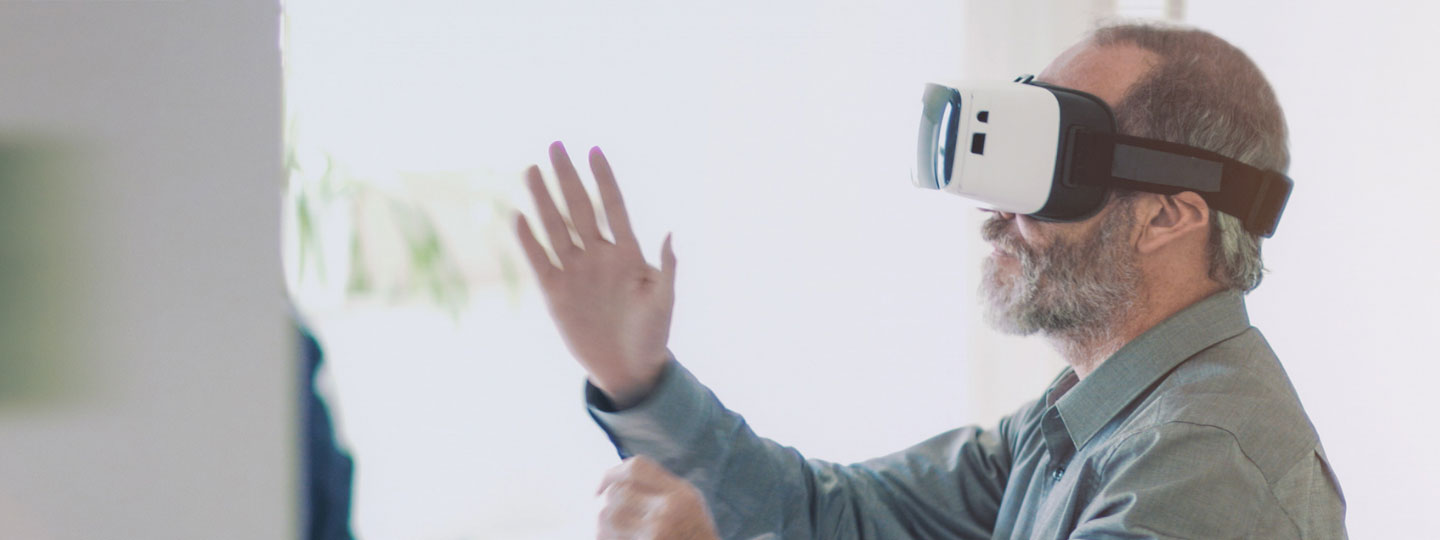How can virtual reality help to treat fibromyalgia?
05 October 2021
Research we’re funding at Anglia Ruskin University is investigating the interactions between the brain, body and pain in people with fibromyalgia, using virtual reality technology.
Why is this research important?
Fibromyalgia is a long-term condition that causes pain and tenderness all over your body. The causes of fibromyalgia are not fully understood. Whilst recent research suggests that changes to the immune system may be a cause of the condition, changes to how the brain perceives the body and pain are also thought to play a part.
There’s growing evidence that chronic pain conditions such as fibromyalgia are associated with differences in how the brain functions. For example, how the brain interprets signals from different senses (sight, touch and sound).
People with fibromyalgia can also temporarily lose the feeling that their body belongs to them and their experience of the space around their body can become distorted. This can be very disorienting and confusing for people with fibromyalgia.
Research led by Dr Jane Aspell hopes to improve our understanding of fibromyalgia, by exploring the way in which brain combines signals and perceives the body and the space around it.
How can using virtual reality help?
Virtual reality involves wearing a headset with a screen in front of the eyes, which shows the user an artificial world with realistic sights and sounds. The user can look around the simulated world, moving their head to explore their surroundings. Virtual reality can be used to simulate an environment, to give the use a realistic idea of what the space would look like.
Virtual reality is often used for video games but has many uses in training, education and medical research. For example, it can allow a realistic but safe experience of a using a parachute for trainees. It also has applications in medical research, by recreating the symptoms or experiences of a medical condition.
Virtual reality can be used create life-like illusions, so that people experience a virtual body as though it is their own.
These illusions can be used to explore how people perceive their body. Dr Aspell is hoping to understand if this perception is different for people with fibromyalgia.
Dr Jane Aspell said, “Some people with fibromyalgia report that they can lose the sense that their body ‘belongs’ to them and their experience of the space around their body can feel distorted. We will use virtual reality to temporarily manipulate body experience. This will enable us to systematically test in what way bodily experience differs in people with fibromyalgia, and how this may explain some aspects of their pain.”
How will this work benefit people with fibromyalgia?
There’s currently lots we don’t know about fibromyalgia. It’s hoped that this research using virtual reality can help us to better understand what causes this condition.
Not only could this allow for better diagnosis, but the research could also aid the development of new treatments that use virtual reality to help manage pain for people with fibromyalgia.
This work is in early stages but if successful, this could provide a new pain management option for people with fibromyalgia, many of whom do not respond to current treatments.
Dr Aspell said, “We will soon be starting a study to test whether a virtual reality ‘out of body’ illusion is able to result in a sustained reduction of painful symptoms. Earlier work with a mixed group of people with different types of chronic pain conditions showed that the illusion could reduce pain ratings by almost 40% but do not yet know how long-lasting the effect may be.”
How you can get involved in our research
We’ve recently launched new and exciting opportunities to get involved in our research.
For more information, or to find out how you can become involved, please visit our research involvement pages.
We’re here whenever you need us.
- If you would like to talk to someone, you can call our free helpline on 0800 5200 520
- Talk to our arthritis virtual assistant, 24/7
- Join our online community
- Stay in touch and follow us on Twitter, Facebook and Instagram.
You might also be interested in...
-
Our fibromyalgia research highlights
Learn more about our research projects and how we hope to improve diagnosis and treatment options for people living with fibromyalgia.
-
“Fibromyalgia may be invisible to you, but it’s very real to me.”
Stephen shares his experiences of living with fibromyalgia and why he wants to raise awareness of the condition.